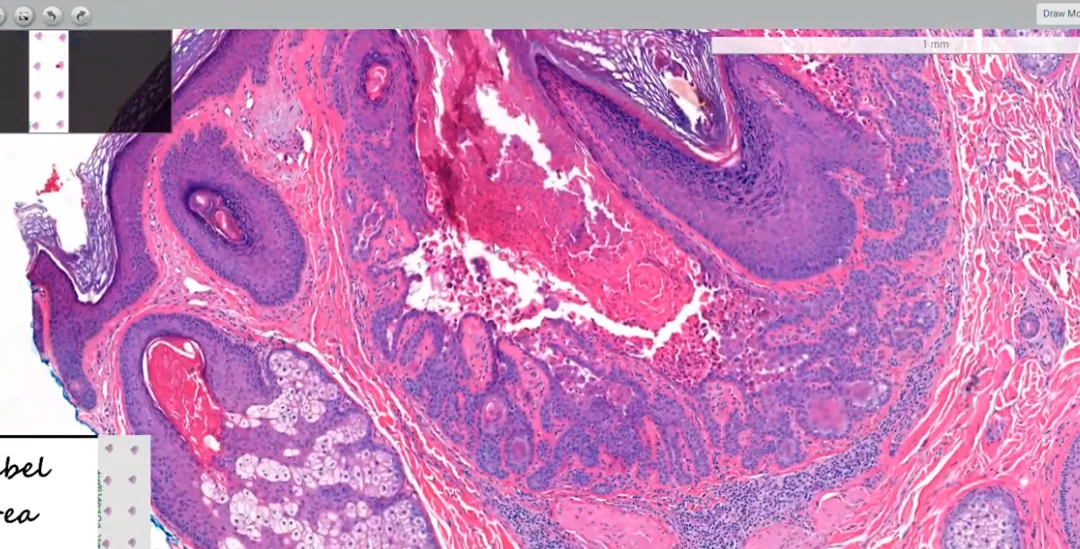Images shown are not intended to be used for the diagnosis or treatment of a disease or condition.
A warty dyskeratoma is an uncommon but benign skin lesion, normally presenting as a solitary (sometimes umbilicated) papule on sun-exposed areas of the head and neck. In this episode of Digital Dermatopathology Digest, Rajni Mandal, MD, dermatopathologist at PathologyWatch, explains the common characteristics of a warty dyskeratoma.
“It is an endophytic lesion . . . growing into the skin,” says Mandal. “It can also be cup-shaped and can be centered around a follicle.”
The warty portion of the dyskeratoma presents papillomatosis and hypergranulosis. They also present villi projecting into the lesion, as well as a central keratin plug. You will also find suprabasilar clefting.
In addition to these attributes, Mandal describes the following characteristics:
Acantholytic Dyskeratosis
Warty dyskeratoma is primarily characterized by acantholytic dyskeratosis. Dyskeratosis refers to the premature keratinization of keratinocytes, characterized by dense encephalitic cytoplasm.
Corps Grain and Corp Ronds
Corp ronds are dyskeratotic cells that still have a rounded nucleus. Core grains, on the other hand, are dyskeratotic cells with a flattened nucleus. Both are present in warty dyskeratoma, giving it a similar histological appearance to Darier’s disease.
Whether you’re in residency, studying for board exams, or a practicing dermatologist looking to stay sharp, the Digital Dermatopathology Digest video series is your informational and convenient source for dermatopathology review. Find the full series here.

